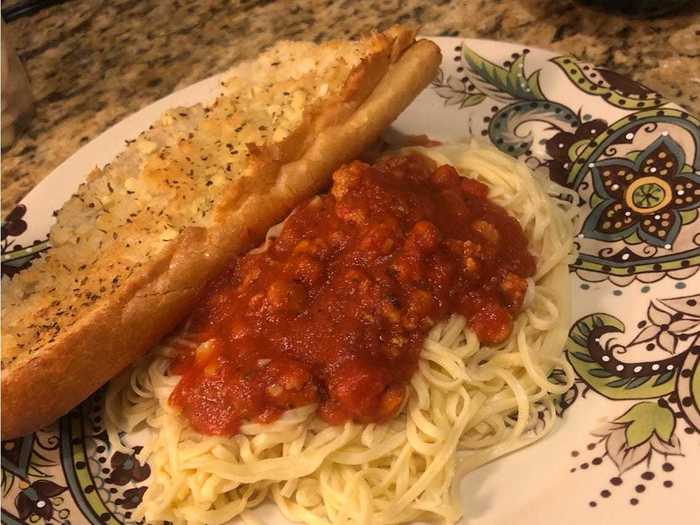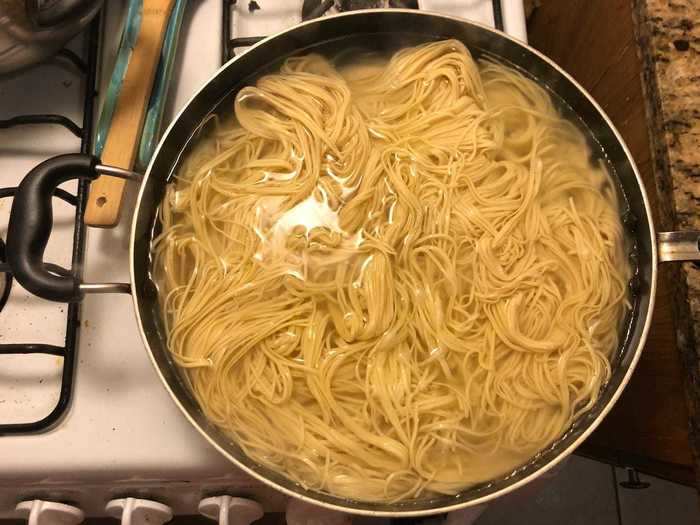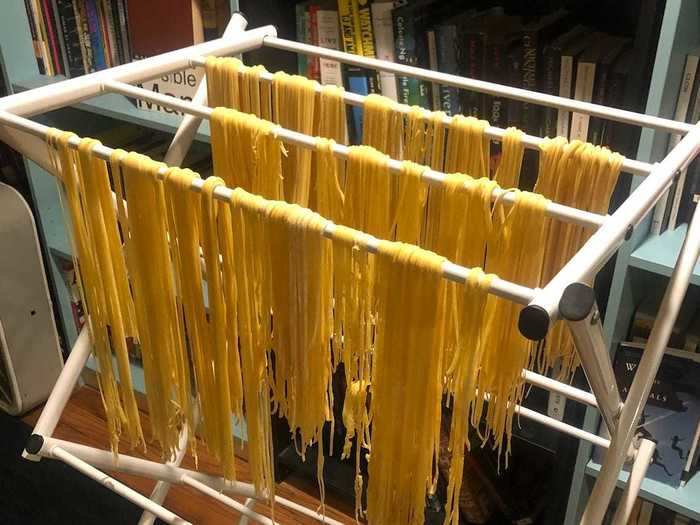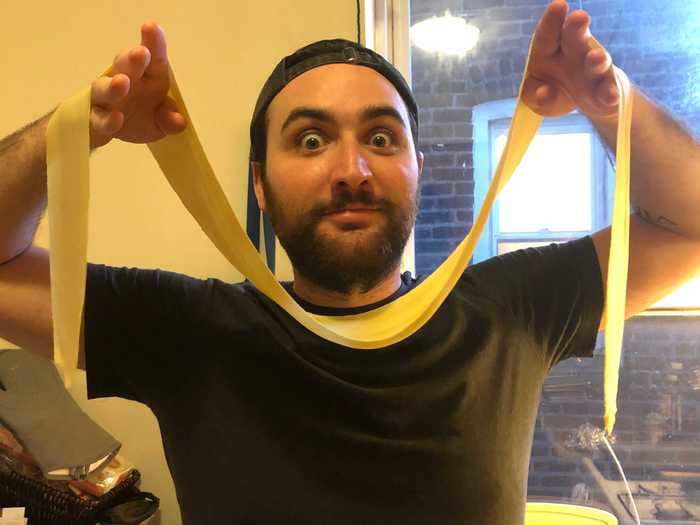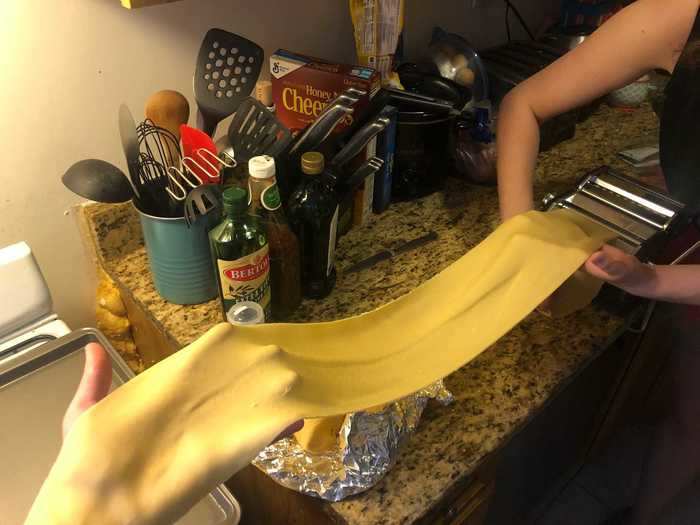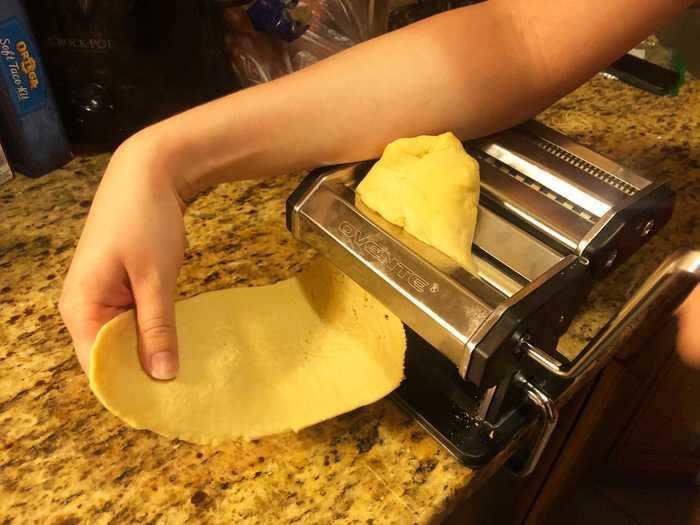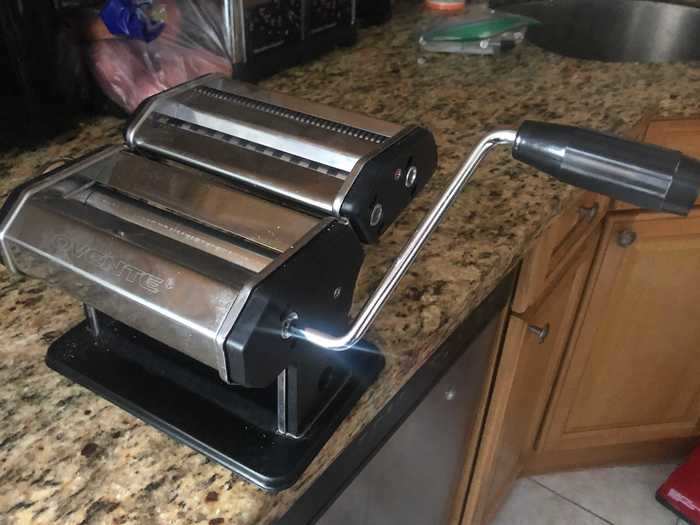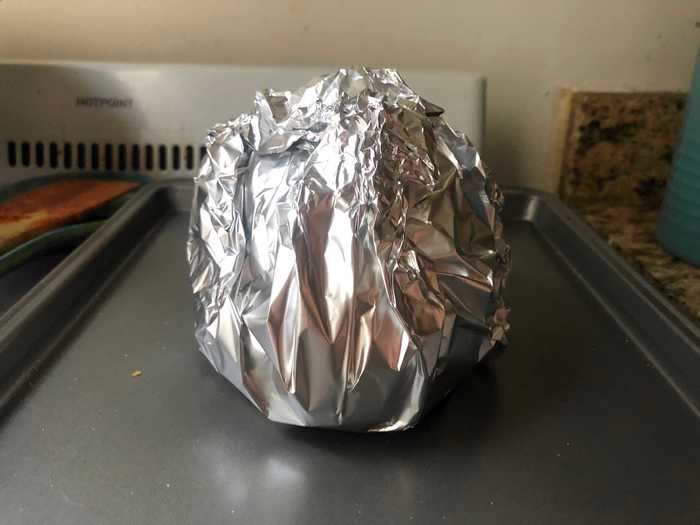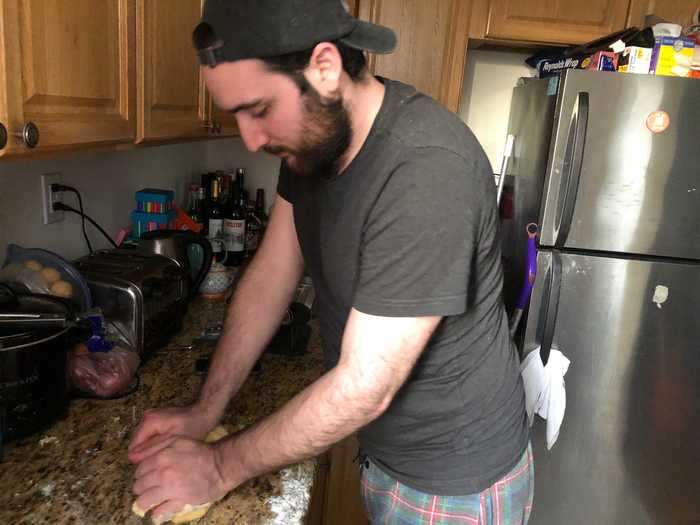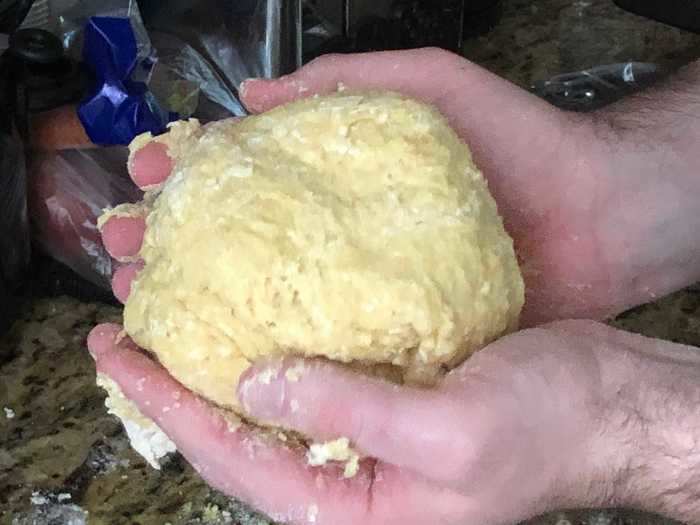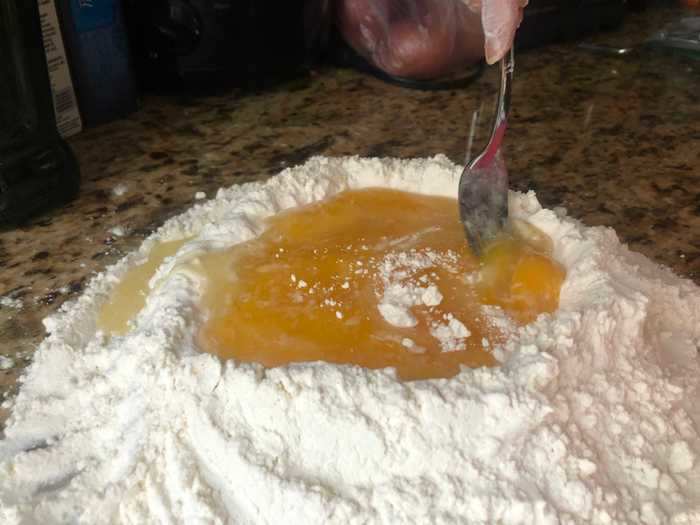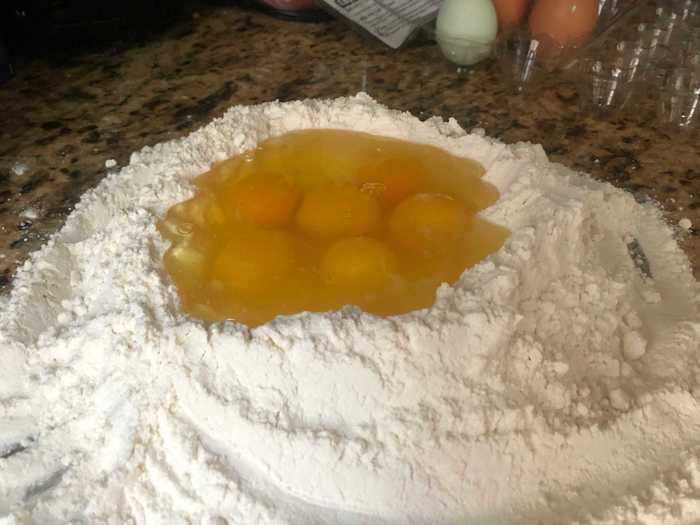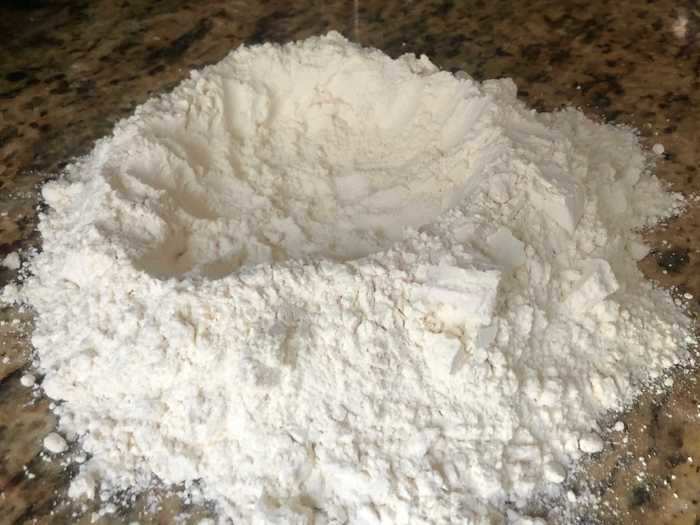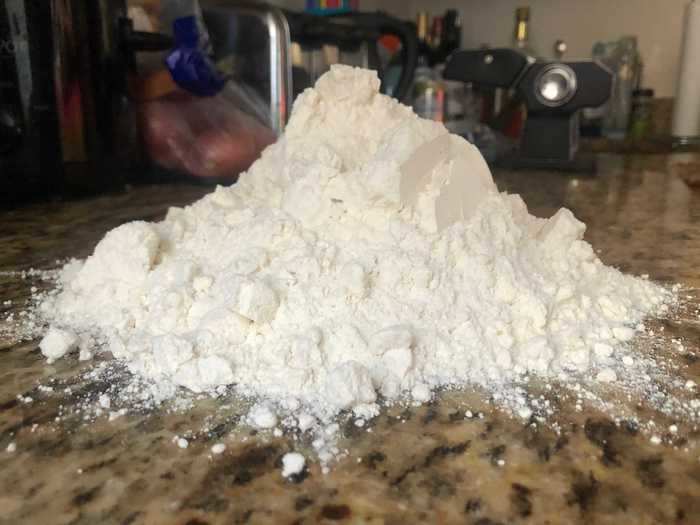Making pasta is a surprisingly easy process.Frank Olito/ Insider
- When the coronavirus canceled my plans to travel to Italy this summer, I decided to make homemade pasta to bring a bit of Italian culture into my home.
- I was surprised to learn pasta is mainly made of only flour and eggs, so the recipe was shockingly easy to follow.
- A pasta maker made it much easier to roll out the dough and to cut the perfect noodle, and a clothing rack worked as a makeshift pasta dryer.
- The finished dish was delicious — one of the best meals I've had during the lockdown.
- Visit Insider's homepage for more stories.
Back in February, I planned a trip to Italy for this upcoming July. I was excited to visit Rome for the first time, to see Vatican City, and to take a road trip down to the Amalfi Coast. Like most people, my plans were canceled when the coronavirus pandemic swept across the globe.
As I entered the second month of social distancing in my Brooklyn apartment, I started thinking of ways to experience the Italian culture without leaving my home. I decided the best way to do that was to make the country's national dish — pasta. But I didn't want to make any old pasta from the box. Instead, I wanted to create it from scratch.
Following the recipe from Gimme Some Oven, I made homemade pasta, and this is how it went.
Read the original article on
Insider
Once cooked, I drizzled some of my grandmother's secret sauce over the pasta and paired it with some garlic bread.
The finished product.
Frank Olito/ Insider
When I took my first bite of the homemade pasta, I instantly took notice of the texture. It felt significantly lighter than the pasta I usually make out of the box. When I rolled a bite-sized portion on my spoon and placed it in my mouth, it felt like a soft pillow of deliciousness. Paired with the family secret sauce (hint: simmer the sauce for three hours), this pasta was one of the best dishes I've had during the lockdown.
While pasta making is an art form, especially in Italy, it was shocking to learn that pasta really is just eggs and flour. I may not be traveling to Italy this summer, but if I close my eyes and take a bite of this homemade pasta, I could almost taste the Mediterranean.
After letting the noodles dry for 15 minutes, I cooked them in boiling water for just three minutes.
Cook the pasta.
Frank Olito/ Insider
When cooking normal, dry pasta from the box, it normally takes 15 minutes for the pasta to cook. When making fresh, homemade pasta, you simply submerge the pasta in boiling water for three minutes.
Once the pasta was cut, I had to find a place to let the noodles hang and dry, so I improvised.
Let the pasta hang dry.
Frank Olito/ Insider
My roommate's clothing rack was the perfect makeshift pasta dryer.
Next, it was time to cut the lengthy and thin dough into pasta noodles.
Cutting the noodles.
Frank Olito/ Insider
When I placed the dough into the other side of the pasta maker and cranked the handle, it cut perfectly formed angel hair pasta.
I rolled out the dough until it was so thin that it was almost translucent.
Make sure the dough is thin.
Frank Olito/ Insider
When I poked my hand through the dough, you could almost see my fingers. That's how I knew it was time to move on to the next step.
Though the lengthy dough might be difficult to handle, it's definitely fun to play with.
Playing with the dough.
Frank Olito/ Insider
The dough pictured here was one of the shorter pieces we rolled out. Some pieces were even double this size, so we had to get creative with where to put it. We ended up stretching it across the counter and even across the stovetop.
The most challenging part of rolling out the dough was that it gets very long and difficult to handle.
The pasta dough gets really long.
Frank Olito/ Insider
I recommend having a cooking partner during this step because four hands are much better than two. My roommate helped me handle all this pasta.
The first step with the pasta maker was to roll it out as thinly as possible.
Roll out the dough.
Frank Olito/ Insider
There is a knob on the side of the pasta maker that changes the thickness of the rolled dough. For this recipe, I rolled out the dough three times on the level seven setting. The dough was quite thick, so I switched to level three and then level two until the dough was stretched very thin.
Now it's time to introduce you to the pasta maker.
The pasta maker.
Frank Olito/ Insider
As the dough rested, I set up my roommate's pasta maker, which made this process so much easier. Although it looks complicated, it's actually quite simple to use. The left side flattens the dough to varying thickness and the opposite side cuts the dough into pasta shapes.
If you don't have a pasta maker, don't worry. You can simply roll out your dough until it's very thin and just cut noodles with a knife.
Once I was done kneading the dough, I wrapped it in foil and let it rest for 30 minutes.
Wrap up the dough.
Frank Olito/ Insider
The recipe says you should wrap the dough in plastic wrap — I only had foil on hand, but it seemed to work just as well.
When it finally started to look like a dough, I had to knead it for 10 minutes.
Knead the dough.
Frank Olito/ Insider
The dough started out feeling grainy in my hands but as I kneaded it, I felt it get smoother and more elastic.
As the egg and flour combined, it slowly started to resemble a very sticky dough.
The dough will be sticky.
Frank Olito/ Insider
At this stage, the dough will feel grainy and very sticky.
After that, I very slowly whisked the eggs and gradually incorporated the flour.
Slowly whisk the eggs.
Frank Olito/ Insider
If you whisk too fast, the flour crater will crumble and once again your eggs will spill all over the counter. In this case, slow and steady really does win the race.
It was time to fill up that crater with six eggs, a drop of olive oil, and a teaspoon of salt.
The eggs in the flour.
Frank Olito/ Insider
I learned the hard way that you must go slowly. If you go too fast and dump all the eggs in at once, it will overflow and send your eggs and flour sliding over the counter and floor.
Next, I had to make a hole in the flour so the eggs could have a place to rest.
A hole in the flour.
Frank Olito/ Insider
My flour mound resembled a crater.
The first step was to pour 4 cups of all-purpose flour directly onto the counter.
The flour.
Frank Olito/ Insider
As someone who likes to keep their kitchen relatively clean, especially when cooking, this first step seemed strange. Most times, I'm making dough in a bowl and trying my best to keep the ingredients in that bowl and off the counter. This recipe, however, challenged me to be comfortable with getting my kitchen dirty from the onset.

